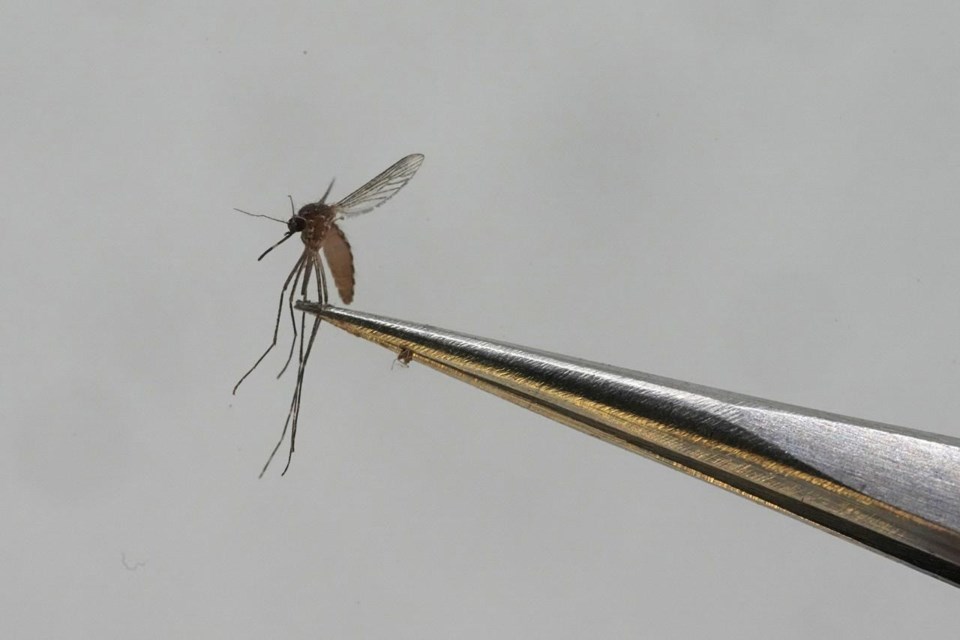Scientists are learning to turn the genetics of insect pests against themselves, altering the genome of familiar foes in ways that give farmers and doctors new ways to fight them.
The burgeoning field offers fresh hope against old scourges such as malaria. And it could provide shiny new tools as familiar insecticides lose their punch and climate change shuffles the deck.
But concerns buzz the new technology like a cloud of gnats.
"Questions remain about the efficacy of these tools, their safety and their appropriateness," says a new report from the Council of Canadian Academies. "Will it be suitable to deploy gene editing in the natural environment and how will gene editing fit into the wider pest control tool box?"
The report, released last week, was commissioned by the Pest Management Regulatory Agency, an arm of Health Canada that regulates chemicals used to manage pests. It's the start of what its authors hope will be an urgent and thoughtful conversation about the possible role of a brand-new way to swat those pesky bugs.
"Genetic pest-control tools could dramatically shift our relationship with the environment, not only because of their potential impact on the ecosystem of which we are a part, but also because of their challenge to the social and cultural values that shape decisions surrounding their use," it says.
Genetic pest control is being considered for several reasons, said Mark Belmonte, a co-author and University of Manitoba biologist.
"Traditional pesticides are becoming less effective, either because insects are developing resistance or because communities are looking for what I would consider safer alternatives."
Climate change adds its own pressures.
"We have these really cold winters and that is great for insect control," Belmonte said. "Now we're seeing this huge shift where the periods of cold don't last as long or are completely disappearing. We're seeing insect populations change quite quickly."
Witness the spread of mountain pine beetles in the west and western bean cutworms in the east, he said.
As well, the technique reduces chemical use and, unlike pesticides, is highly targeted to a single species.
Genetic responses to these challenges may take one of two paths. It can either change a genome to sterilize the pest or alter something else that makes them less successful — say, reducing their ability to survive cold.
Both those strategies can be used in two ways.
In one, a modified population such sterile males is introduced in large enough numbers to reduce and control an infestation. Modified insects would have to be periodically reintroduced.
In the other, the insect — perhaps with a change leaving it vulnerable to a chemical — is altered in such a way that its genome replaces the original in the overall population. The new bug becomes the new normal.
Humans have been altering animals through selective breeding for centuries. But this feels new, said co-author Ben Matthews, a University of Manitoba zoologist.
"I think we are doing something fundamentally different."
Breeding animals for desired characteristics affords years to assess their behaviour and impacts. Not so with an organism modified in the lab and released, Matthews said.
"You may not be able to pull it back."
Many are uncomfortable with the idea of "playing God," said Matthews.
Still, genetically modified mosquitoes are already being tested in Africa against malaria, a disease that killed nearly 620,000 people last year. That death toll makes a compelling case to proceed with research, said Robert Slater, a professor of public policy at Carleton University and chairman of the panel that wrote the report.
"Bringing control to malaria has clearly got a huge public good attached to it," he said.
Canada is just beginning to discuss how to regulate genetically modified insects, said Slater. It's not going to be easy.
"The regulatory system works off evidence. It needs to weigh what are the risks and what are the benefits.
"This is a brand new technology and we have very little evidence."
As well, Slater points out those who might enjoy the benefits of pest control through genetically modified insects may not be the same as those bearing the risks.
"Frequently, they're not the same people at all. Sometimes, the people bearing the risks are remote and distant from those receiving the benefits."
Slater said he and his colleagues recommend a go-slow approach, with lots of what he calls "exit ramps."
"If this works, we'll try another step," he summarizes.
Slater said small field trials would allow regulators to learn how to work with local communities and provide much-needed data on the effects and benefits. More research is needed — as is something else, often in short supply.
"Anybody who becomes involved in this science needs one characteristic," Slater said. "Humility."
This report by The Canadian Press was first published Nov. 18, 2023.
Bob Weber, The Canadian Press



